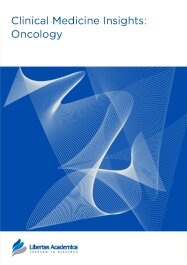

Publication Date: 04 Aug 2013
Type: Original Research
Journal: Clinical Medicine Insights: Oncology
Citation: Clinical Medicine Insights: Oncology 2013:7 173-180
doi: 10.4137/CMO.S12169

Introduction: The purpose of the present retrospective study was to review outcome and patterns of failure of patients who were treated with radiotherapy for cervical lymph node metastases from an unknown primary site (CUP).
Patients and Methods: Between 2000 and 2009, 34 patients diagnosed with squamous cell CUP were admitted to radiotherapy in curative intent. In 26 of 34 patients (76%) neck dissection was performed prior to radiotherapy, extracapsular extension (ECE) was seen in 20 of 34 patients (59%). Target volumes included the bilateral neck and panpharyngeal mucosa. Concomitant chemotherapy was applied in 14 of 34 patients (41%).
Results: After a median follow-up of 45 months for the entire group, 2 of 34 patients (6%) presented with an isolated regional recurrence, another 2 of 34 patients (6%) developed both local and distant recurrence, and 6 of 34 patients (18%) had distant failure only. Estimated overall survival after 2- and 5 -years was 78% and 63%. All patients with N1 or N2a disease (n=6) were disease free after 5 years. ECE, concomitant chemotherapy and involvement of neck levels 4 and 5 were associated with worse overall survival on univariate analysis.
Conclusion: Radiotherapy of the panpharynx and bilateral neck leads to excellent local control while distant metastases are the most frequent site of failure and prognostically limiting. Therefore intensified concomitant or sequential systemic therapies should be evaluated in future trials.
PDF (496.02 KB PDF FORMAT)
RIS citation (ENDNOTE, REFERENCE MANAGER, PROCITE, REFWORKS)
BibTex citation (BIBDESK, LATEX)
XML
PMC HTML


My experience publishing in 'Clinical Medicine Insights: Oncology' was excellent. I was impressed with the quick review and proof-read processes. The electronic submission website is user friendly, and the continuous manuscript status updates received from the journal were helpful in tracking the progress of the paper.
Facebook Google+ Twitter
Pinterest Tumblr YouTube